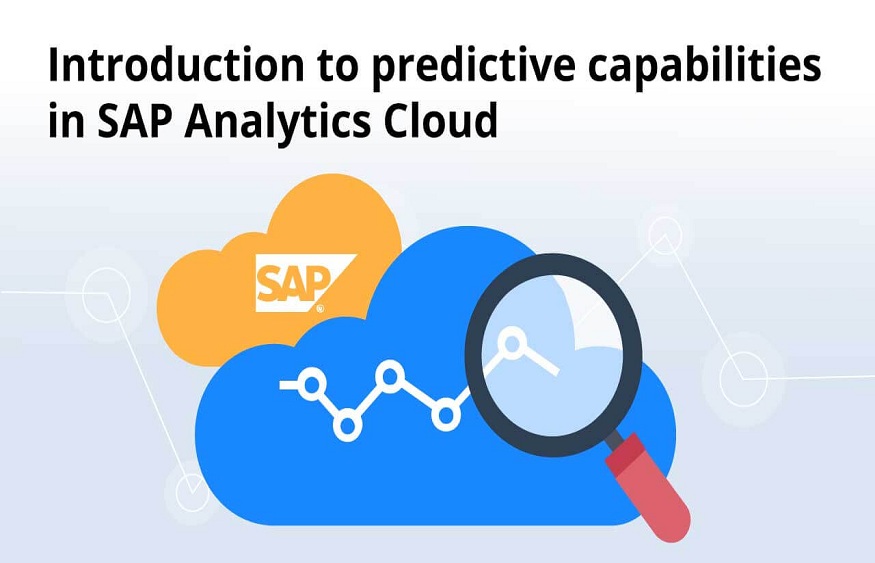Improving Decision-Making with SAP Predictive Analytics

In today’s fast-paced business world, making informed decisions is crucial.
Whether you’re a small business owner or part of a large enterprise, having the right tools to predict outcomes can be a game-changer. This is where SAP Predictive Analytics steps in, providing a powerful platform to help you make smarter choices.
The Basics of Predictive Analysis
The subject of predictive analysis is categorized into two different segments. Each of these are quite important for how the SAP’s system will work. So, it’s best to know more about it.
1: Data — The Heart of Predictive Analysis
In the enchanting world of predictive analysis, data serves as the quintessential potion, infusing life and power into the magical process. Much like the elixirs brewed by skilled alchemists, data fuels the art of foreseeing future trends and outcomes. SAP Predictive Analysis, akin to a masterful alchemist’s laboratory, stands ready to harness this potent force.
Within its hallowed chambers, SAP Predictive Analysis possesses the remarkable ability to seamlessly handle an array of data types, such as the –
- Familiar spreadsheets and
It is within this harmonious convergence that disparate data sources find their unity. Through meticulous transformation, they are transmuted into meaningful, actionable insights.
2: Algorithms — The Wizards of Prediction
In the hands of skilled practitioners, SAP Predictive Analysis serves as a formidable tool, empowering them to wield the magic of prediction with precision and insight.
Through the judicious selection of algorithms, practitioners embark on a journey of discovery, unraveling the mysteries hidden within the data.
In the end, SAP Predictive Analysis stands as the hallowed bridge between the realm of raw data and the luminous realm of foresight. With its mastery over data and algorithms, it invites practitioners to embark on a journey of exploration, unlocking the secrets that data holds.
How Does SAP Predictive Analysis Work?
SAP Predictive Analysis, if you use it correctly, can help you out in more than one aspect. Let us discuss more about it.
1: Unearthing Hidden Insights
That’s right.
SAP Predictive Analysis, with the tools and software it comes with, can help you demystify a lot of shortcomings and concealed knowledge.
For instance, you may discover that certain products sell better on rainy days, or that a specific demographic prefers a particular brand.
These insights can be a goldmine for your business. They can help you tailor your marketing strategies, optimize inventory levels, and even enhance product development.
2: Streamlining Operations
Running a business involves a multitude of tasks and decisions. From inventory management to marketing campaigns, the list goes on. SAP Predictive Analytics can help streamline these operations by providing data-driven recommendations.
For example, if you’re struggling with inventory turnover, the software can analyze sales patterns and suggest optimal reorder quantities. This ensures you have enough stock to meet demand without overstocking and tying up capital.
3: Enhancing Customer Experiences
In today’s customer-centric world, understanding your clientele is paramount. SAP Predictive Analytics can help you do just that. For instance, it can coherently evaluate consumer data and offer insights on the following –
- Buying behavior,
- Preferences, and
- Even predict future needs.
This not only boosts sales but also enhances the overall shopping experience.
4: Embracing a Proactive Approach
Traditionally, decisions were often reactive. You waited for a problem to arise and then addressed it.
With SAP Predictive Analytics, you can shift to a proactive approach. For example, they can help you foresee potential challenges and break them down efficiently.
So, it’ll be easier for you to take preventive measures.
For instance, if you’re in the finance sector, the software can help detect anomalies in financial transactions, potentially flagging fraudulent activities before they escalate.
5: Overcoming Common Challenges
Implementing an efficient predictive analytics solution like SAP will be a game-changer. But, it’s not without its challenges. Therefore, it’s important for you to have a clear understanding of your data sources and business goals.
In addition, you have to ensure data quality and accessibility as well. The more efficient you and everyone else in your team is, the better you’ll be able to use SAP.
Where is SAP Predictive Analysis Used?
SAP Predictive Analysis can be used in more than one aspect. Here’s what you need to know about them –
1: Customer Relationship Management (CRM)
SAP PA leverages advanced algorithms to sift through vast amounts of historical customer data. It identifies patterns, preferences, and trends in customer behavior, allowing businesses to gain valuable insights into what drives their customers’ purchasing decisions.
- Personalized Marketing: Armed with this knowledge, businesses can create highly targeted marketing campaigns. By tailoring messages and offers to individual customer segments, companies can significantly increase the effectiveness of their marketing efforts. This leads to higher customer engagement and conversion rates.
- Proactive Customer Service: By predicting customer needs, companies can offer support and solutions before issues arise. This proactive approach to customer service enhances satisfaction levels and fosters long-term loyalty.
- Churn Prediction: SAP Predictive Analysis can also help in identifying customers who may be at risk of churning. It allows businesses to take preemptive measures, like offering special promotions or personalized incentives, to retain valuable customers.
- Feedback Analysis: The platform can analyze feedback, reviews, and sentiment data to extract meaningful insights. This helps businesses understand customer sentiment, preferences, and areas for improvement.
2: Inventory Optimization
By examining historical sales data and external factors (e.g., seasonality, market trends), SAP Predictive Analysis can generate accurate demand forecasts.
This enables businesses to stock the right quantity of products, reducing carrying costs while ensuring products are available when customers need them.
Apart from this…
- Supply Chain Efficiency: Optimizing inventory levels also leads to a more streamlined supply chain. By aligning stock levels with anticipated demand, businesses can reduce excess inventory, minimize stockouts, and enhance overall supply chain efficiency.
- Cost Savings: Maintaining excess inventory ties up capital and leads to carrying costs. By accurately predicting demand, businesses can reduce excess inventory, resulting in cost savings and improved profitability.
- Minimizing Obsolescence: Predictive analysis helps in identifying slow-moving or obsolete items. This allows businesses to take proactive measures like targeted promotions or clearance sales to minimize losses.
3: Financial Forecasting
SAP Predictive Analysis can transform historical financial data into reliable forecasts. This aids in creating budgets that are based on real-world insights, reducing the likelihood of overestimating or underestimating financial needs. In addition…
- Risk Management: By understanding potential revenue and expenditure scenarios, businesses can develop contingency plans and risk mitigation strategies.
- Investment Decisions: Reliable financial forecasts are crucial for making informed decisions regarding investments, expansions, and resource allocation.
- Stakeholder Confidence: Accurate financial forecasts instill confidence in stakeholders, whether they be investors, creditors, or internal management teams.
- Long-term Planning: By providing a clearer picture of future financial performance, SAP Predictive Analysis supports long-term strategic planning and goal-setting.
In summary, SAP Predictive Analysis empowers businesses to make data-driven decisions across various critical functions. By harnessing the power of predictive analytics, companies can enhance customer satisfaction, optimize operations, and drive financial success. This leads to a competitive edge in today’s dynamic business landscape.





